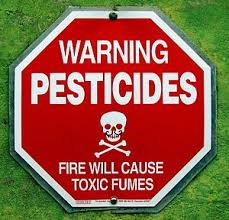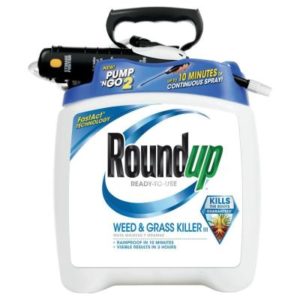 Worried about the effects of persistent pesticides, flame retardants, and the chemicals used in non-stick pans (e.g.Teflon) on human health? An interesting small study from researchers at New York University looked at whether there is a link between having higher levels of these chemicals and celiac disease (a digestive disorder in which there is an abnormal response to foods with gluten). And yes, they found one.
Worried about the effects of persistent pesticides, flame retardants, and the chemicals used in non-stick pans (e.g.Teflon) on human health? An interesting small study from researchers at New York University looked at whether there is a link between having higher levels of these chemicals and celiac disease (a digestive disorder in which there is an abnormal response to foods with gluten). And yes, they found one.
Certain pesticides, flame retardants (PBDEs), and nonstick chemicals (PFASs) are known as persistent organic pollutants (POPs). They are known to be endocrine disruptors (meaning they disrupt the hormonal system). The researchers think that because there is an interplay between endocrine and immune systems, then perhaps these chemicals may contribute to the development of celiac disease in people who are genetically susceptible to it.
Thirty children and young adults newly diagnosed with celiac disease were compared to 58 individuals without the disease. Higher levels of these chemicals were found in the blood in those with celiac disease, when compared to those without celiac disease.
More reasons to avoid non-stick pots and pans, avoid flame retardants, avoid using pesticides on lawns, and to eat organically raised foods.
From Futurity: CELIAC DIAGNOSIS MORE LIKELY WITH HIGHER BLOOD LEVELS OF PESTICIDES
Children and young adults with high blood levels of pesticides—and with high levels of pesticide-related chemicals called dichlorodiphenyldichlorethylenes—were twice as likely to receive a new diagnosis of celiac disease than those without high levels, report researchers. ...continue reading "Certain Chemicals Linked to Celiac Disease"

 Did you know that our modern lifestyle is exposing us to thousands of harmful chemicals? All of us are exposed to many harmful chemicals daily - in ordinary household products, at work and school, in our food, and in the air and water around us. These chemicals are found in plastics, in stain resistant finishes, non-stick cookware, flame retardants, fragrances, pesticides, water resistant finishes, and antimicrobial products.
Did you know that our modern lifestyle is exposing us to thousands of harmful chemicals? All of us are exposed to many harmful chemicals daily - in ordinary household products, at work and school, in our food, and in the air and water around us. These chemicals are found in plastics, in stain resistant finishes, non-stick cookware, flame retardants, fragrances, pesticides, water resistant finishes, and antimicrobial products. It is especially important to lower exposures to these harmful chemicals if you are considering conceiving a child, are pregnant, or have children. Many of these chemicals are linked to
It is especially important to lower exposures to these harmful chemicals if you are considering conceiving a child, are pregnant, or have children. Many of these chemicals are linked to  Uh-oh, these research findings are not a surprise. A
Uh-oh, these research findings are not a surprise. A  Pesticides are harmful to developing brains, especially during pregnancy. A number of studies have already found that higher exposure to organophosphate pesticides during pregnancy is linked to poorer cognitive functioning and behavior problems in children. A recent University of California study actually looked
Pesticides are harmful to developing brains, especially during pregnancy. A number of studies have already found that higher exposure to organophosphate pesticides during pregnancy is linked to poorer cognitive functioning and behavior problems in children. A recent University of California study actually looked  Once again the USA lags behind other countries - this time in banning harmful pesticides. Dr. Nathan Donley at the Center for Biological Diversity in Oregon
Once again the USA lags behind other countries - this time in banning harmful pesticides. Dr. Nathan Donley at the Center for Biological Diversity in Oregon  Did you know that over 90% of all Americans have pesticide residues in their bodies? How do we know this? From studies and from the
Did you know that over 90% of all Americans have pesticide residues in their bodies? How do we know this? From studies and from the  Are all foods contaminated by the herbicide glyphosate?
Are all foods contaminated by the herbicide glyphosate? Glyphosate (found in Roundup and Ranger Pro) is the most heavily used herbicide (weed-killer) in the world, and its use has been steadily increasing in the past decade.
Glyphosate (found in Roundup and Ranger Pro) is the most heavily used herbicide (weed-killer) in the world, and its use has been steadily increasing in the past decade.